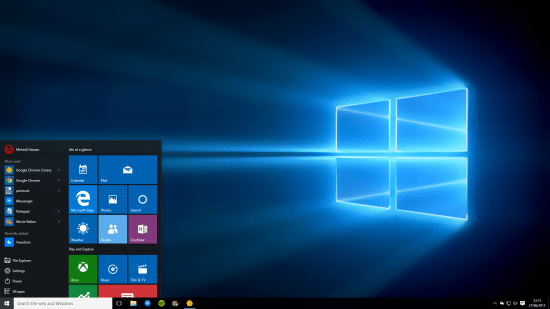When Microsoft finally released its long-awaited Windows 10 operating system in late July, the information security community immediately issued assessments of Microsoft and how well its new security features would protect users.
Leading the way is the new Device Guard feature, which prevents applications from running unless they originate from the Windows Store, specific vendors or the organization running the operating system. This feature provides enhanced protection against an array of new threats.
Microsoft has also improved user authentication with Windows Hello, which supports third-party biometric logins. While enterprise-grade biometrics hardware is still, for the most part, in its developmental stages, Windows Hello opens the door for Windows 10 administrators to replace traditional passwords with more secure forms of authentication, like fingerprint scanners, facial-recognition tools and retina scanners.
And lastly, Microsoft has introduced the new Microsoft Edge browser. Edge improves on Internet Explorer by offering users a faster and better experience, while also improving security. As MWR InfoSecurity’s David Chismon told InfoSecurity Buzz, Microsoft Edge is more secure because it “has a smaller attack surface than previous browsers due to a lack of ActiveX and plugins.”
A VPN For Windows 10 :
Although these new features will better protect individual devices, they do little to protect connections to other devices and networks. To assure secure remote access across Windows 10 environments, network administrators need third-party support, in the form of a remote access VPN solution.
Given the prevalence of remote work – it increased 79 percent between 2005 and 2012 – enterprise IT administrators cannot overlook the importance of securing the connections through which remote users access the corporate network, and particularly those using a new operating system like Windows 10. Hackers will take advantage of unsecure connections, and they may view the new operating system as being particularly vulnerable.
A Windows 10-compatible remote access VPN solution can reduce the likelihood of an attack targeting remote access endpoints by providing users with critical features, including improved ease-of-use, optimization for Internet of Things devices, the capability to initiate a VPN tunnel as soon as the system starts and a scalable user interface, in addition to a streamlined, centralized management process for network administrators.
Between the native security features of Windows 10 and a remote access VPN solution compatible with the new operating system, administrators will be better able to protect their devices running Windows 10 and their networks as a whole.[su_box title=”About NCP engineering ” style=”noise” box_color=”#336588″] Since its inception in 1986, NCP engineering has delivered innovative software that allows enterprises to rethink their remote access, and overcome the complexities of creating, managing and maintaining secure network access for staff.
Since its inception in 1986, NCP engineering has delivered innovative software that allows enterprises to rethink their remote access, and overcome the complexities of creating, managing and maintaining secure network access for staff.
NCP’s award-winning product line spans the spectrum of remote access, from IPsec/SSL VPNs to endpoint firewalls and network access control (NAC) functions. The company’s products support organizations with complex remote user needs, and that want to leverage the latest end-devices to increase staff productivity, reduce network administration and adapt policy changes on-the-fly. Each solution is interoperable with existing third-party software or hardware.
With global headquarters in Nuremberg, Germany and North American headquarters in the San Francisco Bay Area, the company serves 35,000-plus customers worldwide throughout the healthcare, financial, education and government markets, as well as many Fortune 500 companies. NCP has established a network of national and regional technology, channel and OEM partners to serve its customers.[/su_box]
The opinions expressed in this post belongs to the individual contributors and do not necessarily reflect the views of Information Security Buzz.



